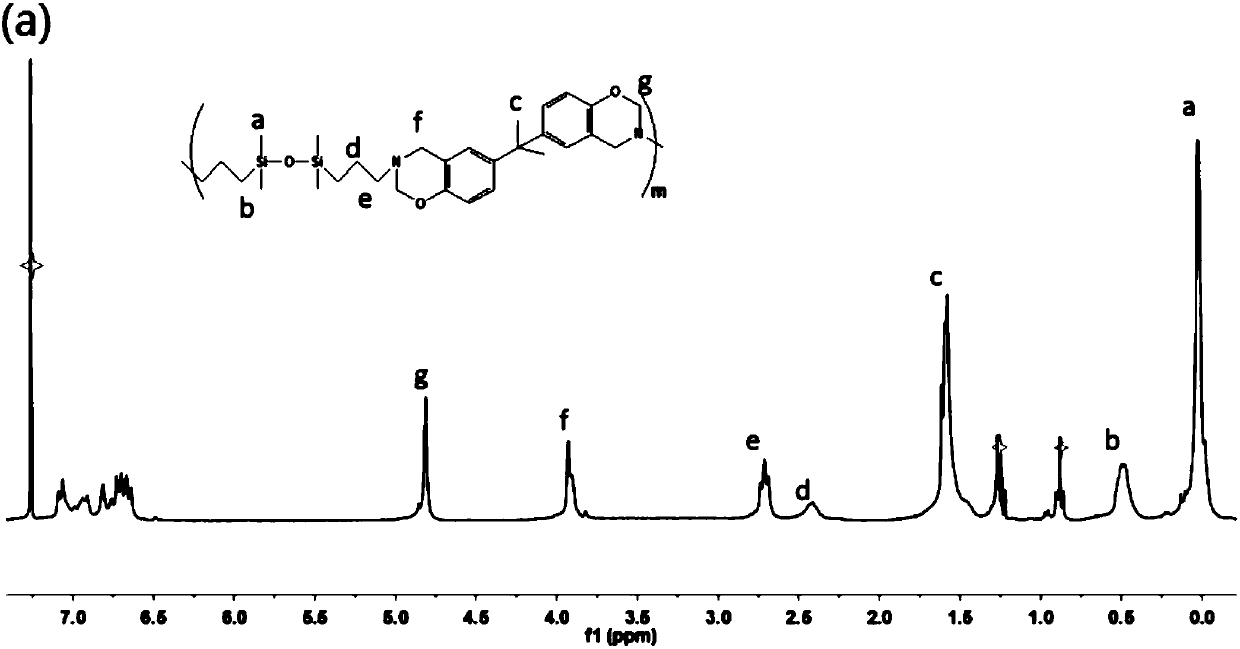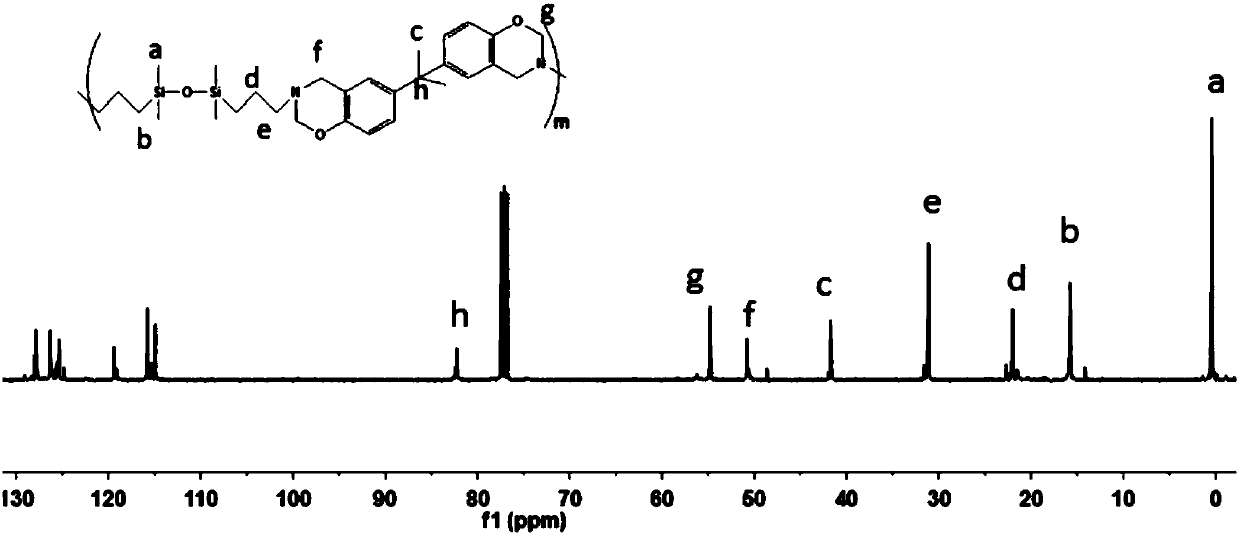Novel polysiloxane-benzoxazine-based luminescent film and its application in UV-LED light
A polysiloxane and light-emitting thin film technology, applied in the directions of light-emitting materials, chemical instruments and methods, can solve the problems of complex preparation methods, low conversion rate of reactants, low molecular weight of polymers, etc. The effect of easy promotion and low preparation cost
- Summary
- Abstract
- Description
- Claims
- Application Information
AI Technical Summary
Problems solved by technology
Method used
Image
Examples
Embodiment 1
[0032] Preparation of polysiloxane-benzoxazine polymer P1:
[0033] Compound aminopropyl disiloxane (5.0mmol), bisphenol A (5.2mmol), paraformaldehyde (20mmol), absolute ethanol (25ml) and toluene (50ml) were added in a 250ml single-necked flask, and refluxed at 110°C After stirring for 48 hours, the solvent was removed by suspension evaporation to obtain polymer P1 with a yield of 94%.
[0034] The above polysiloxane-benzoxazine polymer P1 1 H NMR spectrum see figure 1 , 13 C NMR spectrum see figure 2 , 29 SiNMR spectrum see image 3 .
[0035] The polysiloxane-benzoxazine copolymer P1 described in the present invention has excellent fluorescence performance, and its fluorescence performance is tested by fluorescence spectrum. The main chain of P1 has both Si-O-Si and benzoxazine structures, and can emit blue fluorescence under the excitation of 365nm ultraviolet light.
[0036] The specific test method is as follows: Dissolve a small amount of P1 in toluene to obtai...
Embodiment 2
[0039] Preparation of novel polysiloxane-benzoxazine-based luminescent film of the present invention:
[0040] Dissolve 2.0g of P1 in toluene to obtain a toluene solution of P1, take 0.001g of rhodamine-B and add it to the toluene solution of P1, and remove most of the solvent by suspension evaporation to obtain a viscous mixture, which is dropped into polytetrafluoroethylene In the mold, evaporate the remaining solvent at room temperature, and finally place the mold in an oven at 120°C and heat it for 20 minutes, then release the mold to obtain a luminescent film.
Embodiment 3
[0042] The fluorescence spectrum of the novel polysiloxane-benzoxazine-based luminescent film of the present invention under the excitation of 365nm excitation light
[0043] The organosilicon fluorescent film has excellent fluorescent performance, and its fluorescent performance is tested by fluorescence spectrum. The specific test method is as follows:
[0044] Get the organosilicon fluorescent film prepared in Example 2 and place it in the solid test support, and carry out the fluorescent performance test (λ Ex = 365 nm, slit width: excitation: 10 mm, emission: 5 mm). The fluorescence spectra obtained above are shown in Figure 5 .
[0045] After adding rhodamine-B to P1, an organic silicon luminescent film was obtained. The film has strong fluorescence emission at 450nm and 580nm under the excitation of 365nm excitation light, which belongs to the characteristic fluorescence emission of polymer P1 and rhodamine-B. The thin film has fluorescence emission at 450nm and 5...
PUM
 Login to View More
Login to View More Abstract
Description
Claims
Application Information
 Login to View More
Login to View More - R&D
- Intellectual Property
- Life Sciences
- Materials
- Tech Scout
- Unparalleled Data Quality
- Higher Quality Content
- 60% Fewer Hallucinations
Browse by: Latest US Patents, China's latest patents, Technical Efficacy Thesaurus, Application Domain, Technology Topic, Popular Technical Reports.
© 2025 PatSnap. All rights reserved.Legal|Privacy policy|Modern Slavery Act Transparency Statement|Sitemap|About US| Contact US: help@patsnap.com



